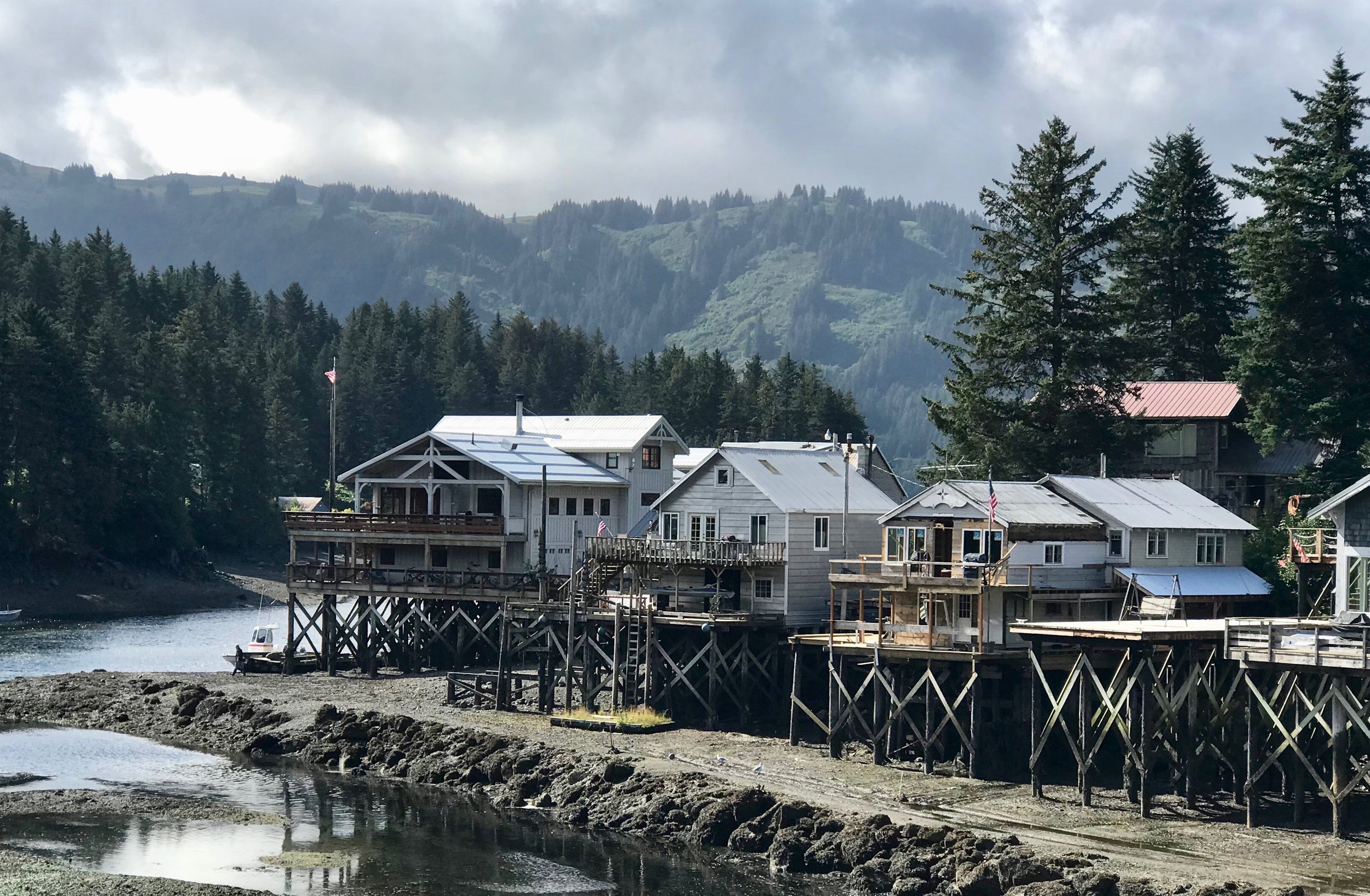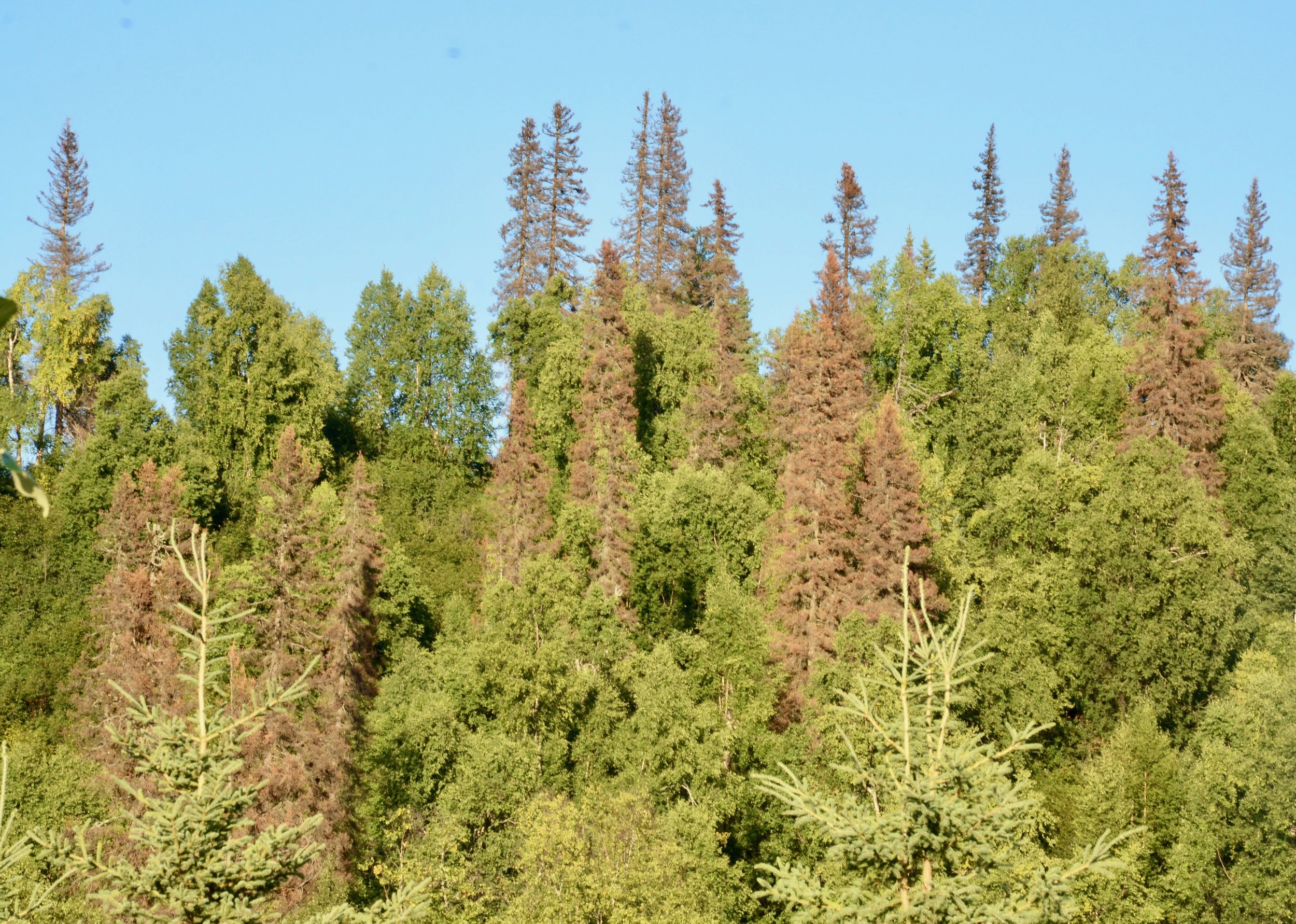Front-row witness to disaster
Climate change starts in Alaska
By Rick Holmes
Sept. 7, 2018
Seldovia, Alaska – Sudden disaster hit Alaska at 5:36 p.m. on Good Friday, 1964. Seldovia, and Alaska, were never the same.
Alaska averages a thousand earthquakes a month, but this was the big one. It was the second most powerful quake ever recorded, the strongest in North America. The earth heaved; great fissures opened; underwater landslides generated tsunamis; highways and buildings crumbled; water pipes and electric lines snapped; 139 people were killed.
Anchorage was so battered that you can hardly find an old part of town today. Some communities all but disappeared.
Seldovia, a thriving fishing village founded by Russian traders, at one point had more than 2,000 residents. It was known for the boardwalk that allowed residents to walk the length of the seaside town, even at high tide, without getting their feet wet. The boardwalk, along with homes and businesses, came crashing down in the Good Friday earthquake. When the tide came in, it became clear that the land on which Seldovia sat had fallen as well, by about six feet.
By the time Seldovia filled in the waterfront and moved to higher ground, its canneries had moved across Kachemak Bay to Homer. Soon, a new road was built connecting Homer to Anchorage, and it became the economic hub of that stretch of the coast. Today, no roads lead to Seldovia. Like a lot of Alaskan communities, you can only get there by boat or plane. It’s got about 250 year-round residents, and just a small section of its “historic boardwalk” survives.
Sudden disaster came again to the Alaska coast in 1989, when the oil tanker Exxon Valdez, its safety equipment out of date, its radar broken and its captain sleeping off a bender, slammed into Bligh Reef. Its split tanks dumped 10.8 million gallons of crude oil into Prince William Sound, despoiling 1,300 miles of coastline. It killed up to a half-million birds, maybe 5,000 sea otters and countless marine animals. It destroyed a rich fishery, tourist resources and the economies of several towns along the coast.
Alaska sits on the edge. It’s at the edge of the Pacific “ring of fire,” where the Pacific tectonic plate collides with the North American tectonic plate. It’s a place of extreme conditions, its northernmost points at the edge of uninhabitable by humans.
Alaska also sits on the edge of climate change. The Arctic is warming twice as fast as the rest of the planet, researchers say, and Alaska is a front-line witness.
The Arctic sea ice to its north is shrinking, making way for the “Northwest Passage” explorers sought centuries ago. The permafrost beneath the surface of much of the state is thawing, creating “drunken forests” of wildly tilted trees as the ground buckles below their roots. Permafrost thaw is buckling roads, shorelines and house foundations, forcing some small communities to pick up and move. Indirectly, climate change is killing Alaska’s white spruce, as warmer temperatures have allowed bark beetles to expand their territory. That’s fuel for bigger wildfires.
Yes, climate change is complicated, with second, third, and fourth-order consequences that are difficult to imagine, let alone predict. “There are cycles within cycles,” a naturalist told me, and they all interact with each other. The cycle that’s driving the changes now, he explained, is the doubling, over the last century, of the amount of carbon dioxide in the atmosphere.
And yes, as the climate deniers like to say -- as if it’s a profound revelation -- the earth is always changing.
But the pace of change matters, as does its direction. Glacial melting in Denali National Park is now happening at a faster pace than in the last 400 years, scientists just reported. And the pace of the increase of carbon dioxide in the atmosphere over the last 60 years is 100 times faster than in previous natural buildups.
The cycles are accelerating and reinforcing each other. Melting solar ice means the darker waters absorb more solar heat than snow-covered ice. Thawing permafrost releases greenhouse gasses into the atmosphere that had been safely stored in ice for thousands of years.
Alaska is resilient, and so are the people who live here. Prince William Sound is slowly healing. Towns threatened by rising seas and thawing permafrost can, like Seldovia, be moved to firmer ground. But climate change isn’t a local disaster that can be contained and recovered from. What’s happening in Alaska won’t stay in Alaska.
Climate change is a slow-motion disaster, more subtle than an earthquake but just as destructive. Its human causes are less obvious than those of a drunk captain who runs his ship aground, but that doesn’t relieve them – us -- of responsibility to steer a safer course.
Rick Holmes can be reached at rick@rickholmes.net. You can follow his journey at www.rickholmes.net. Like him on Facebook at Holmes & Co, on follow him on Twitter @HolmesAndCo.


